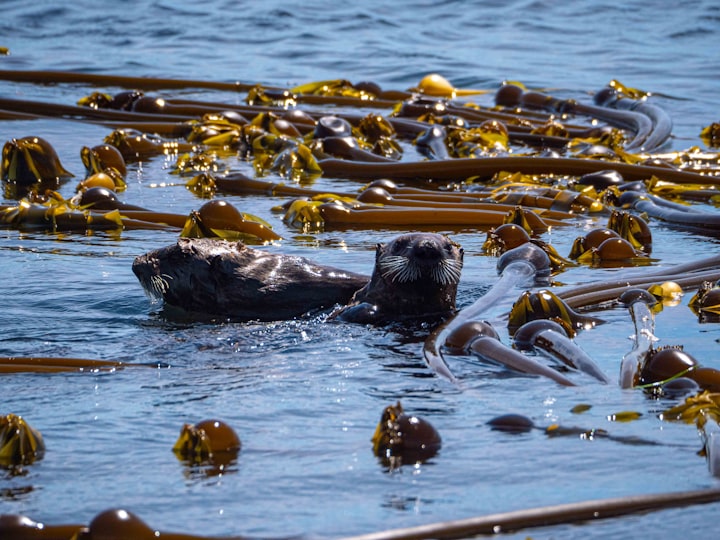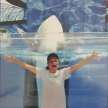First Nations People team up with scientists to build a seed bank for kelp
For the first time, First Nations communities in the Pacific Northwest team up with scientists to combat climate change and promote marine biodiversity.

Note: See the citation for this article down below
Found in all temperate shorelines worldwide, kelp forests provide food, nursery areas, shelter, and protection from predators and storms. It is a habitat for threatened species such as sea otters, grey whales, rockfish, and juvenile Chinook salmon (Mesa, 2023). Indigenous people of the Pacific Northwest have valued the large brown algae species as a traditional food source for centuries. It’s also one of the most common algae species to be cultivated on a commercial level.
However, in the last four decades, kelp has been threatened by the effects of climate change, pollution, overgrazing in areas where there are fewer sea otter colonies and over-harvesting. Because of these threats, some regions, like Northern California, have only a few strongholds (Mesa, 2023). While the removal of over-abundant sea urchins through partnerships with local researchers and fishermen and the reintroduction of sea otters have allowed kelp forests to recover in parts of the West Coast (Mesa, 2023), a new solution could become a fundamental change in kelp forest conservation-kelp seed banks.
Recently, marine biologists based in Washington State have begun a partnership with the Jamestown S’Klallam Tribe through the Puget Sound Restoration Fund (PSRF) to expand a seed bank for Northwest kelps to restore kelp forests in Washington. The project began in 2010 by researchers based at the University of Wisconsin-Milwaukee as an attempt to preserve kelp seeds and plant them across Puget Sound (Mesa, 2023). The spores are currently housed at seed bank facilities in Wisconsin but will be moved to a research station in Manchester, Washington. The purpose of expanding the seed bank is to preserve threatened kelp species for restoration projects. The tribe currently collects spores along the Juan de Fuca Strait but will work with the PSRF to sample other sites along the region (Mesa, 2023).
Although the seed banks are big enough to house thousands of spores in an average-sized refrigerator, researchers have stressed their need to ensure their kelp labs are going to keep the seed bank alive (Mesa, 2023). This is because unlike terrestrial plant seeds, which can be dried and stored for decades while remaining viable, storing kelp for a long period is going to be a bigger challenge. For example, when kelp reproduce, they release zoospores that develop into male and female gametophytes. To keep those gametophytes viable, the researchers keep them under red light, in low-iron environments (Mesa, 2023). Some gametophytes are kept in freezers, which puts them in arrested development. This means that new banks will be needed to keep kelp conditions under control with emergency measures in case of power going out during storms (Mesa, 2023).
The PSRF’s seed bank is just one of several kelp seed banks across the Pacific Northwest, and there is an urgent need for new facilities to establish new banks to help maintain and preserve biodiversity (Mesa, 2023). By preserving these precious seeds, researchers hope to give kelp and the forests they create the best chance to cope with future environmental changes. The banks will also give people, including First Nations tribes the chance to restore kelp forests with the same genes that have existed on their land since the dawn of time (Mesa, 2023). This will help increase the chances of kelps thriving. Since the gold standard for habitat restoration is to replicate all that was once lost, if all goes as planned, then within the next century, the Jamestown S’Klallam Tribe will access the seed bank (Mesa, 2023). However, the tribe won’t be the only First Nations community to benefit from the efforts. The Samish Indian Nation reported a 36 percent decline in kelp population and forests between 2006 and 2016 across Samish territory. The community plans on using the seed bank to seed their restoration sites (Mesa, 2023).
As the seed bank in Manchester nears completion, the Jamestown S’Klallam Tribe will now have to decide about which kelp species to preserve, but they know the bull kelp, one of the most common kelp species found along the Pacific Northwest, will be one of them. However, they wish to see several understory kelps studied by researchers (Mesa, 2023).
Despite the hype around the seed bank, time is slowly running short for the kelp forests of the Salish Seas. Biodiversity may still be high in the Juan de Fuca Strait, but other parts of the Puget Sound area nearly lost all the bull kelps, and the genetic diversity for some remaining populations is low (Mesa, 2023). That’s why scientists and the tribes know they need to work fast together through science and cultural resources that could help the kelps and the forests they build survive.
Sources:
Mesa, Natalia. “Preparing for the Worst with a Kelp Seed Bank.” Hakai Magazine, 23 May 2023, hakaimagazine.com/news/preparing-for-the-worst-with-a-kelp-seed-bank/?utm_campaign=reprint& utm_source=PopSci.
About the Creator
Jenna Deedy
Zoo and Aquarium Professional, Educator, Cosplayer, Writer and B.A. in Psychology whose got a lot to share when it comes to animals, zoos, aquariums, conservation, and more.
Instagram: @jennacostadeedy






Comments
There are no comments for this story
Be the first to respond and start the conversation.